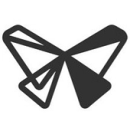
Study after study shows that diverse teams are smarter.
Why? Because working with people who are different from you challenges your brain and can even generate innovation across a business. That’s why, at the following three companies, hiring managers put a premium on bringing on employees with a diversity of experience and thought — and it pays off.
Freddie Montgomery is a talent recruiter at Panorama Education, an edtech startup that offers a SaaS platform for educators to monitor how students are doing across academics, attendance and behavior. Montgomery shares how his background as a teacher in an urban school influences (and enhances) his hiring process.
How does having a team with a diversity of experience and thought drive innovation at your company?
Our product reaches a highly diverse student population across the United States, so having a team that reflects those students’ experiences is essential to building products that best serve them. I’ve been able to see the value add at Panorama Education internally as well, as team members formed a diversity, equity and inclusion working group last year to create an inclusive community and culture for everyone in our office.
Can you give an example of how your background lends itself to innovating at your company?
After graduating college, I worked for an education nonprofit, City Year, as an academic interventionist for 5th grade students in Miami-Dade County Public Schools. Working directly with students in an urban school setting showed me the barriers that exist for students accessing college and career readiness pathways as well as the importance of data in shaping student outcomes. This experience allows me to approach my work with a more critical and thoughtful lens when hiring. For example, I’m able to advocate for candidates who are working in classrooms on their transferable skills in my conversations with hiring managers.
Any other fun ways your company celebrates the diversity of its team?
Twice a month, Panorama hosts a lunch for our employees of color. This space is awesome for team members to build community, celebrate diversity and create a place for dialogue about our shared and unique experiences. We also have an annual “Decathlon” competition, where the entire company puts down their laptops and ventures to a park for games and competitions. In creating these teams, we bring in members from different departments in the hopes of strengthening cross-team collaboration and to help build relationships between team members who may not normally cross paths with their day-to-day work.
Danielle Class, Fuse program manager at Formlabs, explains how an art grad is pushing the envelope technologically at the 3D printing startup.
Can you give an example of an employee whose interesting background lends itself to innovating at your company?
Kat Ely spends her days designing hardware for plastic powders, and spent her college years mastering glass casting at Massachusetts College of Art and Design. Though she originally intended to study ceramics and sculpture, she fell in love with glass, and, four years later, she started connecting the dots. Upon graduating, she joined forces with a glass artist to make 11-foot sculptures through an involved mold-making and casting process. Her intrigue with manufacturing processes led her to a job selling industrial rubber and plastics, where she learned about a variety of processes such as injection molding and rotomolding.
Ely brings a unique blend of engineering and design mindsets to the Fuse and Sift product development teams. Instead of facilitating a handoff from a rough engineering drawing or prototype to a designer for aesthetic input, Ely intertwines these threads throughout. She is constantly thinking about how users will be interacting with the design and where the design process should go next. In one moment, she sparks an idea. In the next, she’s building and testing it.
What’s one example of an innovative idea she’s come up with?
A complicated electromechanical design is hard to achieve; a simple, elegant, minimalist design is even harder. Ely straddles the outside-in user view — simple, straightforward — and the inside-out engineering design: complex, interacting systems. And what she strives for is a clear wall between the two, so that the user can remain naive to the intricacies behind the scenes, and instead focus on a seamless experience. For Ely, it’s about allowing internal complexities and enabling external simplicities.
Any other fun ways your company celebrates the diversity of its team?
Our team grows and evolves constantly and is bonded by a common mission. Educational and experience backgrounds are noted, but as part of the landscape of each person’s story and future aims.
At our team’s core is the ability to recognize potential in each other — and relatedly, the tendency to pair project needs swiftly with supporting resources. One team member trained in electrical engineering may simultaneously juggle designs and testing for two different hardware products; another team member trained in mechanical engineering may take the lead to source more than 500 parts for the next hardware build.
Daniela Field is an MIT graduate and faculty technology advisor at Mendix, a company that creates a productivity platform for organizations. Field said that having a diverse team creates an environment in which more people are willing to share their ideas.
How does having a team with a diversity of experience and thought drive innovation at your company?
What’s more important than having a work environment that encourages participation and diversity? At Mendix, everyone is comfortable expressing and sharing their opinions and experiences. That results in more ideas and solutions being generated and tried out.
What’s one innovative initiative you’ve come up with?
After I spent three business trips going to one customer to train their development team, the customer and I came up with the idea of developing the “Train the Trainer” program. The idea of the program is to turn a lead developer at the customer site into a trainer. The goal is for the customer to become fully self-enabled in the platform.
How does your background lend itself to innovating at your company?
I worked at three other companies before starting at Mendix. I have extensive experience in various technologies and in teaching. At Mendix, I bring my diverse background when building applications for customers. My teaching experience has helped me branch into the academy team and pioneer new programs like Train the Trainer. Currently, I’m a part of the University Program at Mendix, which is like a startup within a startup. I’m always thinking about how to scale, automate or improve processes within the company.







